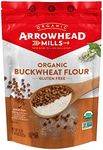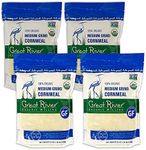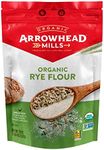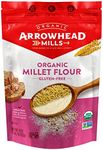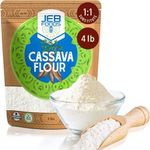Buying Guide for the Best Flour Mills
Choosing the right flour mill can significantly impact the quality of your baking and cooking. Flour mills come in various types and sizes, and selecting the right one depends on your specific needs and preferences. Understanding the key specifications will help you make an informed decision and ensure you get the best fit for your kitchen.Type of MillFlour mills can be manual or electric. Manual mills require physical effort to grind the grains, making them suitable for small batches and those who enjoy hands-on processes. Electric mills are more convenient and efficient, ideal for larger quantities and frequent use. Consider how often you plan to use the mill and the amount of flour you need to produce when choosing between manual and electric.
Grinding MechanismThe grinding mechanism is crucial as it determines the texture and quality of the flour. Common mechanisms include stone burrs, steel burrs, and impact mills. Stone burrs produce a finer, more traditional flour, while steel burrs are durable and can handle a variety of grains. Impact mills are fast and efficient but may produce a coarser flour. Think about the type of flour you want to produce and the grains you plan to grind to select the appropriate mechanism.
CapacityCapacity refers to the amount of flour the mill can produce at one time. Smaller mills are suitable for occasional use and small batches, while larger mills are better for frequent use and larger quantities. Assess your baking and cooking needs to determine the right capacity for you. If you bake often or in large quantities, a mill with a higher capacity will be more convenient.
AdjustabilityAdjustability allows you to control the fineness of the flour. Some mills offer multiple settings to produce coarse, medium, or fine flour. This feature is important if you plan to use the flour for different types of recipes, such as bread, pastries, or pasta. Consider the versatility you need in your flour texture and choose a mill with adjustable settings to meet your culinary requirements.
Material and DurabilityThe material and build quality of the mill affect its durability and longevity. Common materials include stainless steel, cast iron, and high-quality plastic. Stainless steel and cast iron are durable and long-lasting, while plastic mills may be lighter and easier to handle but less durable. Think about how often you will use the mill and the conditions it will be exposed to, and choose a material that will withstand regular use.
Ease of CleaningEase of cleaning is an important consideration, especially if you plan to use the mill frequently. Some mills have removable parts that make cleaning easier, while others may require more effort to clean thoroughly. Consider how much time you are willing to spend on maintenance and choose a mill that offers convenient cleaning options to keep it in good condition.
Noise LevelNoise level can be a factor, especially if you live in a shared space or prefer a quieter environment. Electric mills tend to be noisier than manual ones, but some models are designed to operate more quietly. If noise is a concern for you, look for mills that are specifically noted for their low noise levels to ensure a more pleasant experience.
